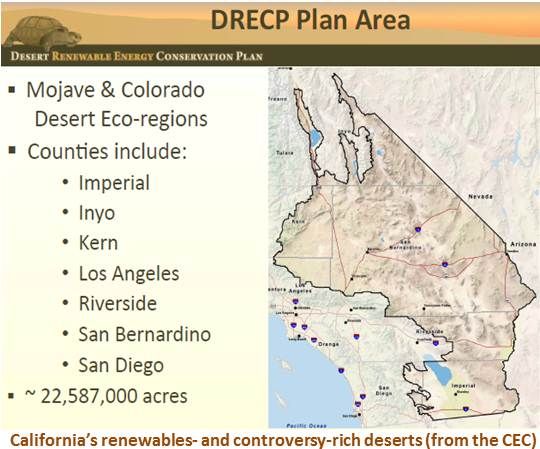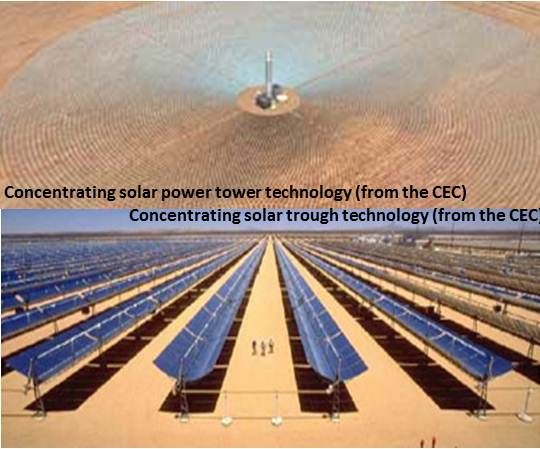From the moment a renewable energy developer selects a site for a utility-scale solar or wind project, be it Nantucket Sound or the Mojave Desert, the conflict begins.
A site with a rich renewable resource offers a developer the prospect of doing well by doing good, of opening up a front in the fight against climate change and the traditional polluting sources of electricity generation. But there is a cost to the communities into which such a project intrudes.
Reactions vary widely. Wind Capital Group’s Tom Carnahan built the 150-megawatt Lost Creek project by demonstrating to rural Missouri residents the local revenues, jobs and landowner leases they would gain from supporting development.
Carnahan said it is vital to form good partnerships with key stakeholders early on, adding, “If there are concerns, address them in a transparent way.”
Engagement with landowners, he found, must be personal. “You call them up. You knock on their door,” he said. “You’ve got to spend some time sitting at the kitchen table, drinking some coffee and talking to folks.” He smiled. “People in rural America, and farmers in particular, have very well-honed BS detectors. You only get one chance to be shooting straight with them and you’ve got to do that.”
Solar power plant developers in Southern California now face those folks.

A bit of history: To encourage homeowners to install rooftop solar systems in the 1980s, California’s leaders decided to exempt them from property tax assessments, according to Center for Energy Efficiency and Renewable Technologies (CEERT) Executive Director V. John White.
The exemption also applies, through 2016, to solar power plant builders. That significantly subtracts from the revenues a project can offer to a locality. And, unlike Carnahan’s wind projects, which leased sites from multiple landowners, solar power plants are often built on land purchased from one or a few owners.
First Solar is looking to recover from missteps made because the company did not fully engage with residents in the small desert communities of Antelope Valley, California when it bought the 230-megawatt Antelope Valley Solar Ranch One (AVSR1) project from NextLight.
AVSR1 is the first of some 30 proposed Antelope Valley renewables projects. In the area, the sun shines 300+ days per year, the wind blows during peak demand periods, and Southern California Edison has already built transmission to deliver thousands of new renewable megawatts to nearby Los Angeles.
First Solar obtained the necessary county approvals before the locals could organize, and construction is proceeding. But there is ongoing enmity and a stream of complaints against the project. First Solar has been making genuine efforts to address the complaints.
A January 9 First Solar offer to donate as much as $280,000 for an Antelope Valley Community College perpetual scholarship fund has not yet been accepted. One local deemed it “blood money” and suggested the community “put it in a barrel and burn it.”
Developers in one of California’s ripest renewable energy zones have been slowed and/or turned away by Antelope Valley’s now-organized resistance.

A couple of hundred miles across the Mojave Desert in Riverside County, more than 20 proposed solar power plants are moving toward development under the intense sun that also comes with existing transmission and the nearby L.A. market.
That is why last November the Board of Supervisors unanimously passed Policy B-29, setting the cost of development at $450 per acre. The assessment is “to compensate the county for the use of its property and for committing vast tracts of land exclusively to solar development.”
It was imposed after four months of not always entirely friendly negotiations between solar developers like BrightSource, enXco, and NextEra and the county.
“I’m convinced that this is the right thing to do, not for us, not for the Board of Supervisors, but for our grandchildren and the future of Riverside County,” said Supervisor John J. Benoit, whose district will see most of the development.
County credits and incentives would return half the assessment to developers if they hire local construction workers and create permanent local jobs. And, according to CEERT’s White, the assessment is only half what the developers will have to pay if the property tax is reinstituted in 2016.
Solar developers are pushing back. The Large-Scale Solar Association and the Independent Energy Producers Association jointly filed a suit against the county, claiming the assessment is a violation of the state constitution.
California’s Proposition 26 prevents taxation in the form of a fee or charge. Because the county’s assessment is not a specific fee for impacts on surrounding communities or for services and infrastructure provided locally, developers say, it is a veiled tax and therefore unconstitutional.
CEERT’s White said he is hopeful the controversy and legal struggle will lead to a compromise. The developers, he said, need more flexibility for “projects in late-stage development that don’t have the chance to factor this into their costs and their pro-formas.” And CSP developers, he added, need consideration because economics currently favor PV, while CSP generates more “value-added and local content.” But with these projects, White explained, “there are a lot of people being put to work that don’t have work” in a California region with double-digit unemployment.
The developers have a lot to offer and the counties have a lot to gain. But this is a question for GTM readers: How much does a developer owe a community?



